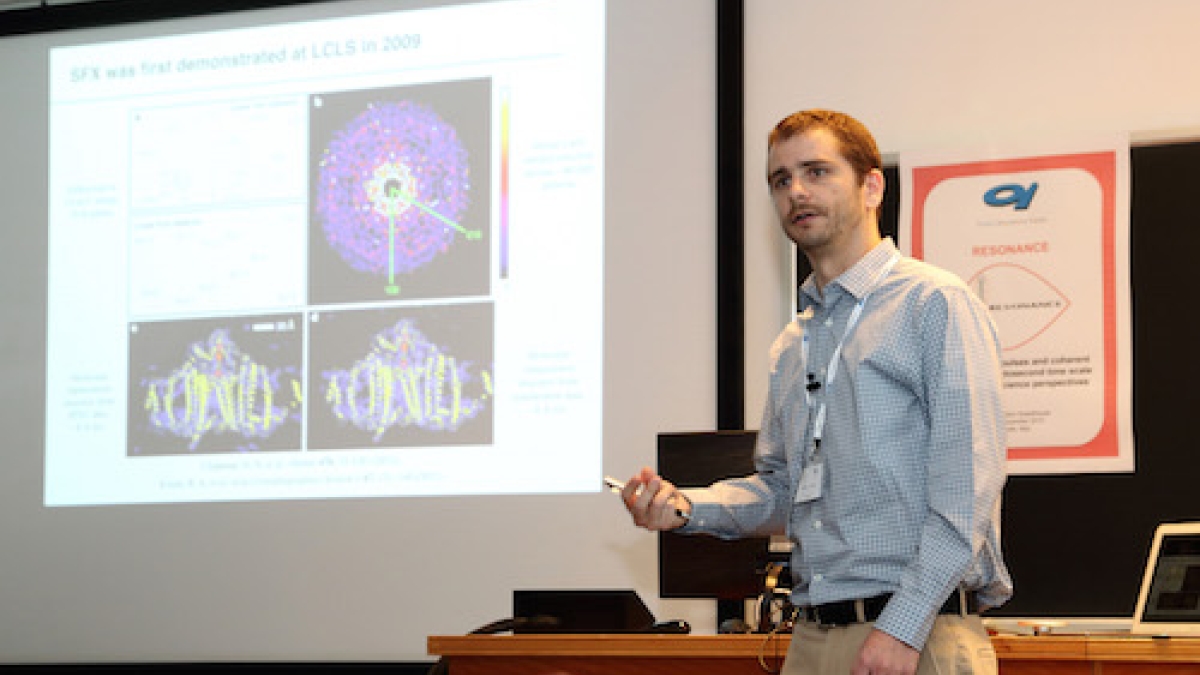ASU physicist receives Fonda-Fasella Award

ASU physics professor Richard Kirian giving his talk on "Direct phasing of nanocrystals using coherent FEL pulses."
ASU physics professor Richard Kirian has been awarded the Fonda-Fasella prize, which is given to a young researcher who has obtained important results while working at Elettra Sincrotrone Trieste, an international research center located in Italy.
The award was given during an annual ceremony at the "Resonance 2015" workshop in Trieste, Italy.
Kirian presented his work on solving the age-old "crystallographic phase problem" using the unique properties of a new breed of X-ray sources known as free-electron lasers (FELs). His experiments at the FERMI FEL provided the first proof-of-principle demonstration that the extremely high coherence of this laser-like X-ray source can provide sufficient information to form images from microcrystals without the need for prior information or resolution restrictions.
The recent development of X-ray FEL-based "serial femtosecond crystallography" has allowed unprecedented views of biomolecules at physiological temperature and with time-resolved dynamics down to the sub-picosecond timescale. Kirian's results add to the appeal of this rapidly developing methodology.
Before joining Arizona State University's Department of Physics in 2014, Kirian held a position at the Center for Free-Electron Lasers at the Deutsches.
More Science and technology

Cracking the code of online computer science clubs
Experts believe that involvement in college clubs and organizations increases student retention and helps learners build valuable…
Consortium for Science, Policy & Outcomes celebrates 25 years
For Arizona State University's Consortium for Science, Policy & Outcomes (CSPO), recognizing the past is just as important as…

Hacking satellites to fix our oceans and shoot for the stars
By Preesha KumarFrom memory foam mattresses to the camera and GPS navigation on our phones, technology that was developed for…